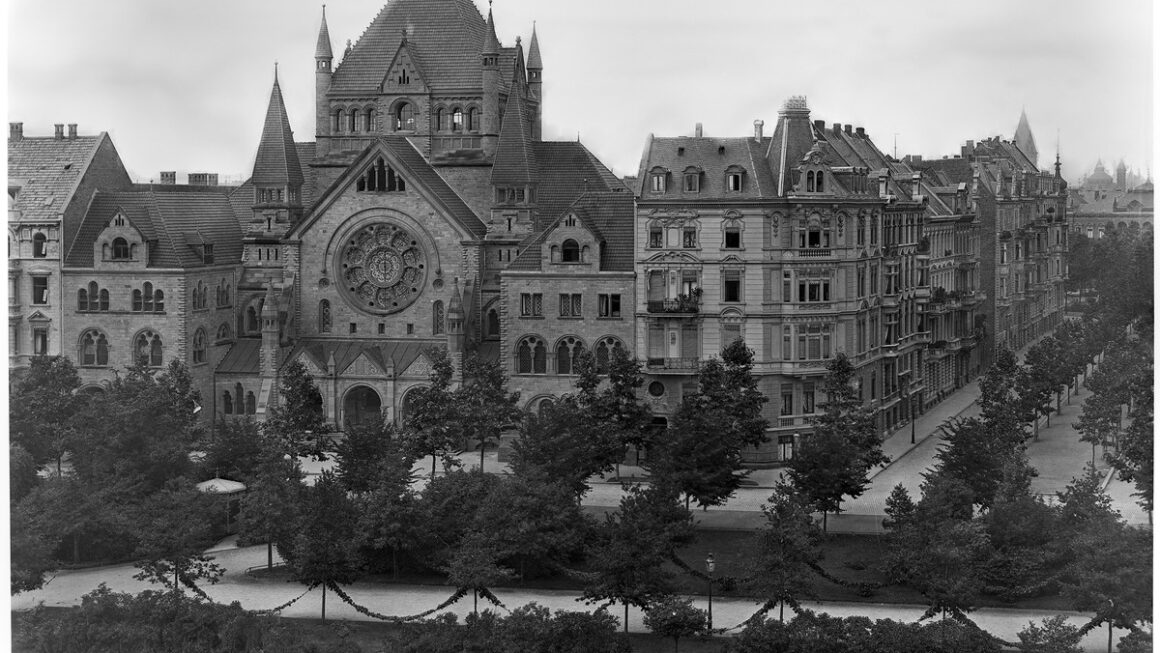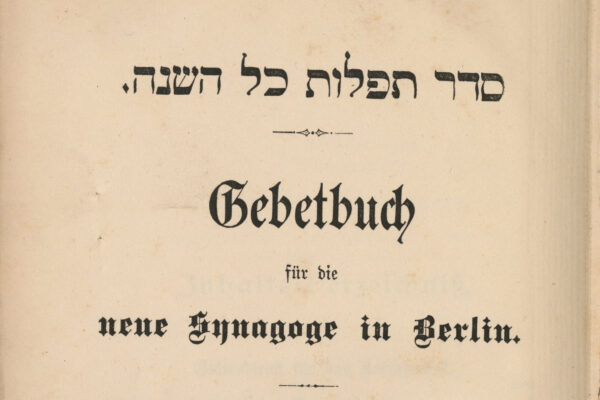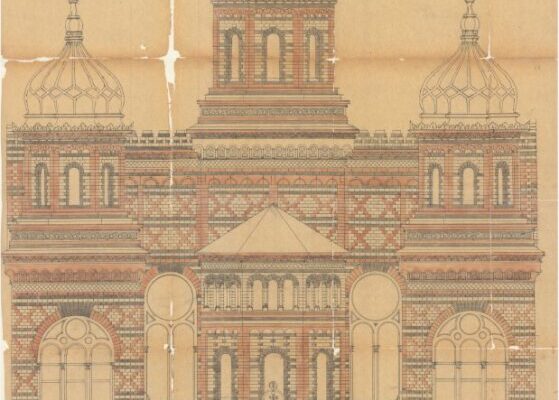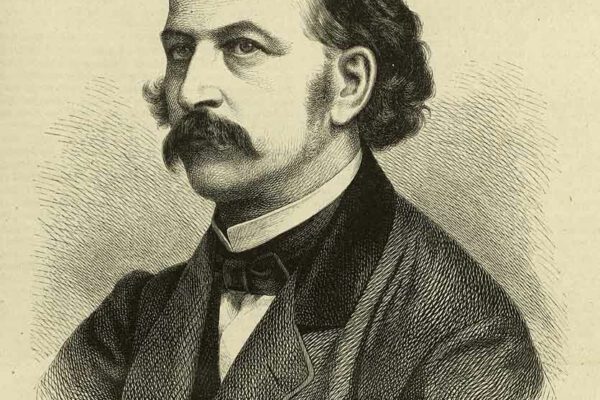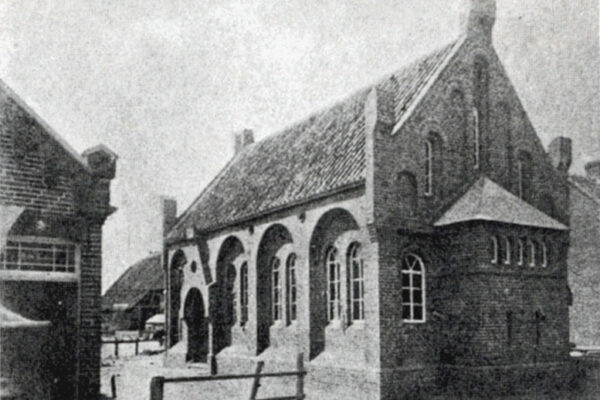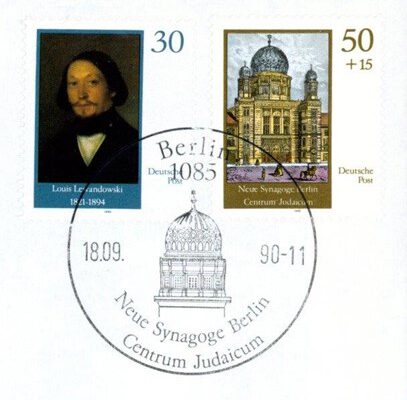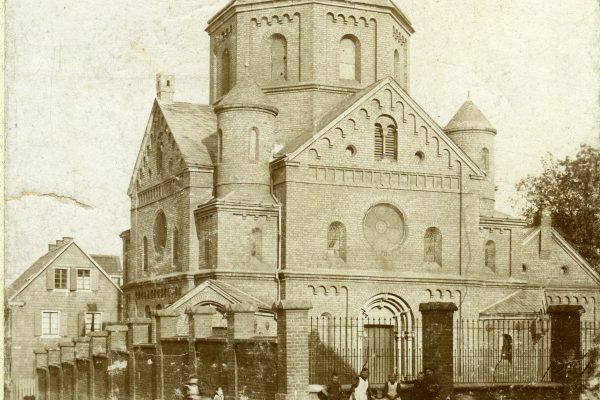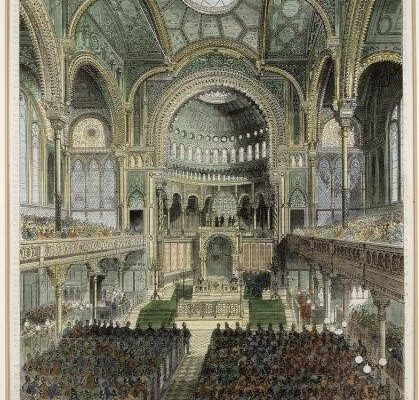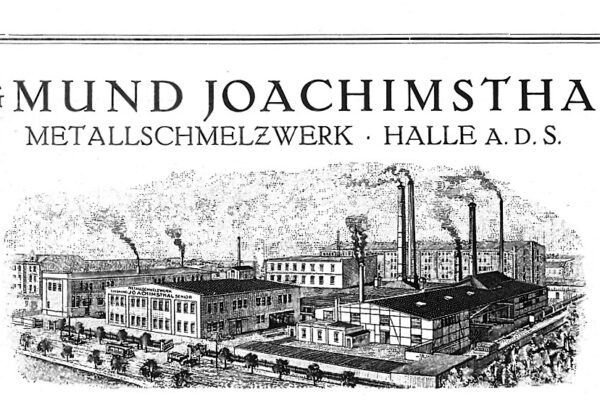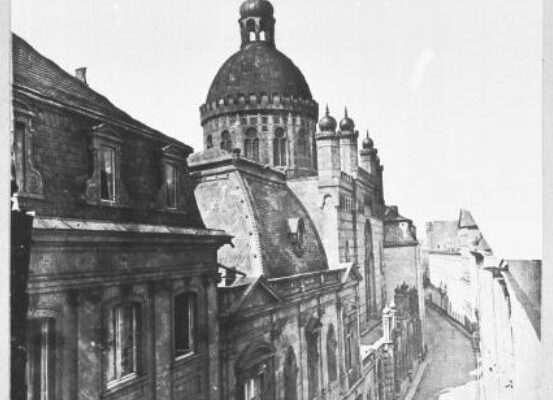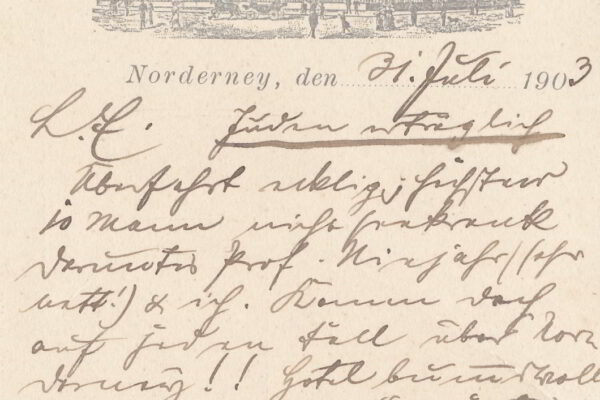The synagogue on Roonstrasse looks back on an eventful history: Completed in 1899, it shaped both Cologne’s cityscape and inner-Jewish developments. In accordance with the reforms in the nineteenth century, the bema, the elevated pulpit for the weekly reading of the Torah, was no longer located in the center of the room, but moved to […]
Liberal Judaism—From Germany and Berlin across the globe
Religious interpretation and practice in the New Synagogue corresponded to liberal Judaism, which became the dominant direction in Germany in the second half of the nineteenth century. This included various elements, such as the use of the German language in the liturgy, an organ and, since 1895, a choir, consisting not only of men but […]
Expansion of the synagogue
In the nineteenth century, due to the economic upswing, the city became increasingly attractive for immigrants, including the settlement of Jewish citizens. When, in 1890, Halle, with a population of roughly 100,000, joined the ranks of the major German cities, 660 Jews were already living here. Within a very short time, the number of congregation […]
Fontane’s letter from the Jewish island of Norderney
The often hostile mood toward Jewish spa guests is also documented in a letter from Theodor Fontane, which he sent from the “Jewish island” of Norderney in 1881. The extent to which resentment and ill will against Jews could be mobilized here is clearly demonstrated by the writer’s example; he thus wrote to his wife […]
Inauguration of the Norderney Synagogue
The Jewish community of Norderney was not an independent synagogue community, but rather a branch community from Norden. It did, however, have its own synagogue, which was used primarily by Jewish bathing guests staying here. In connection with the business opportunities of a bathing resort, Jewish families also settled on the island from the mid-nineteenth […]
Louis Lewandowski
“Ma tovu ohalecha Yaakov” (How beautiful are your tents, Jacob) is the opening line of a prayer that is said upon entering a synagogue and is therefore found as an inscription above many synagogue portals. The setting of this prayer to music by Louis Lewandowski for a four-voice choir, a cantor solo, and organ accompaniment […]
Inauguration of the Solingen Synagogue on Malteserstrasse
In 1861, the synagogue congregation purchased a plot of land on Malteserstrasse, because the half-timbered house on Südwall, which the community had been using since 1787, had become much too small as a synagogue due to the sharp increase in the number of Jewish residents. The financing of the new building took several years. In […]
Inauguration of the New Synagogue Berlin
At its inauguration in 1866, the New Synagogue Berlin was described by the non-Jewish press as “the pride of Berlin’s Jewish community, and even more than this, […] an adornment of the city.” With its almost fairy-tale-like, exotic-looking forms and ornaments, the new magnificent building not only exuded elegance and beauty; with its use of […]
The first own rabbi in Halle
The nineteenth century in Halle was also marked by economic upswing. The railroad connection in July 1840, sugar beet processing, the increasing use of brown coal, and local economic planning on the part of Halle’s merchants initially ensured a gradual economic upswing for the city, which then took off in leaps and bounds in the […]
The Glockengasse Synagogue
After their expulsion from Cologne in 1424, Jews were not permitted to resettle in the cathedral city until 1798. After being readmitted, they founded a congregation and used the premises of the former convent of the Order of Saint Clare on Glockengasse. A steadily growing number of members led to the planning of a new […]
„Jewish bathing resort“ Norderney
Around 1850, Abraham von der Wall, a butcher from Norden, settled in Norderney and opened a kosher butcher’s shop and restaurant. He was followed by other Jewish butchers and restaurant owners, as well as numerous merchants and hoteliers. Even before the First World War, Norderney was considered an affluent “Jewish bathing resort,” while anti-Semitism emanated […]

